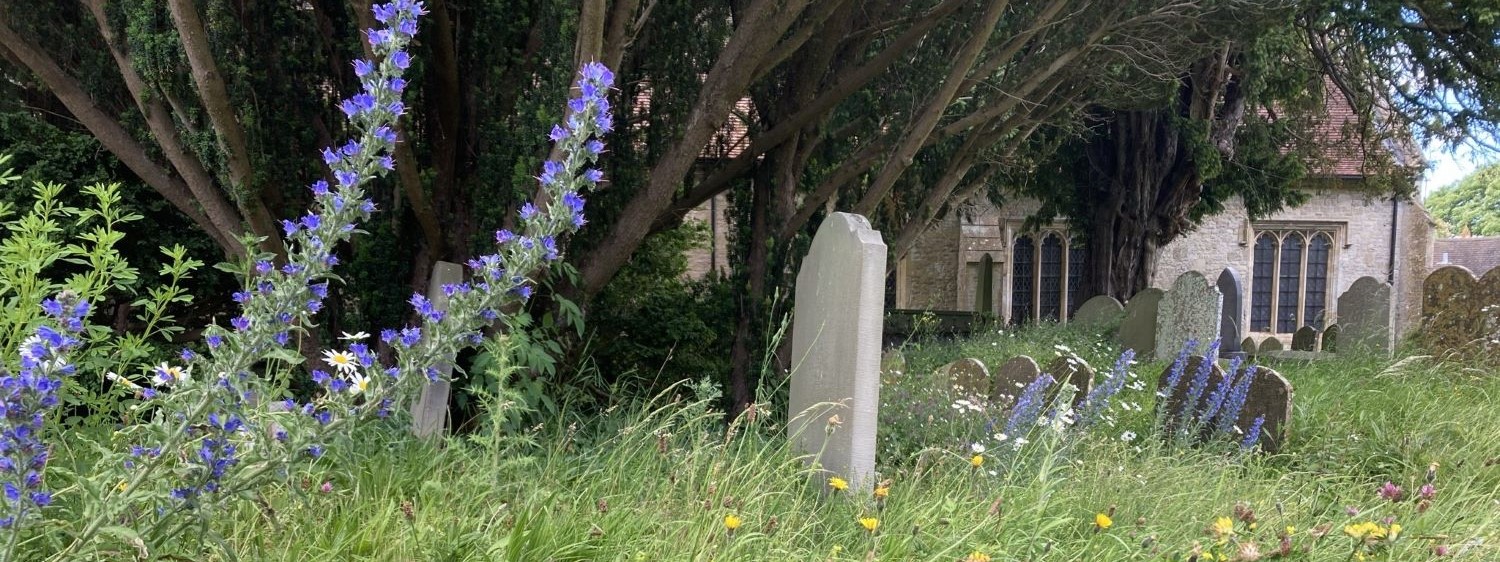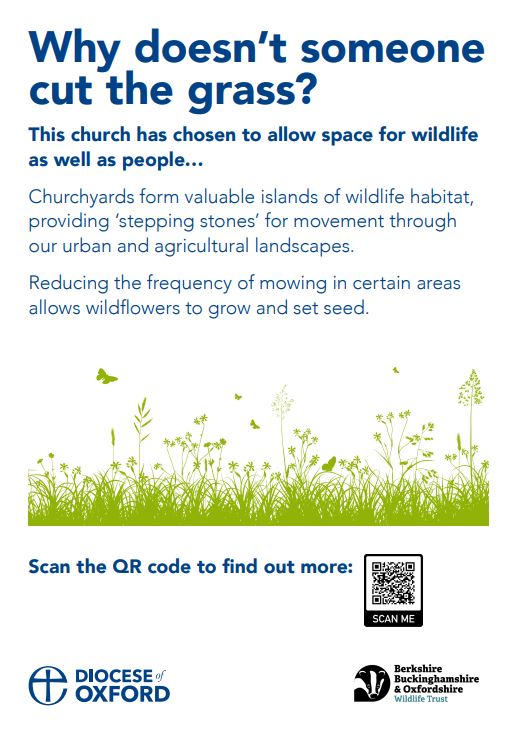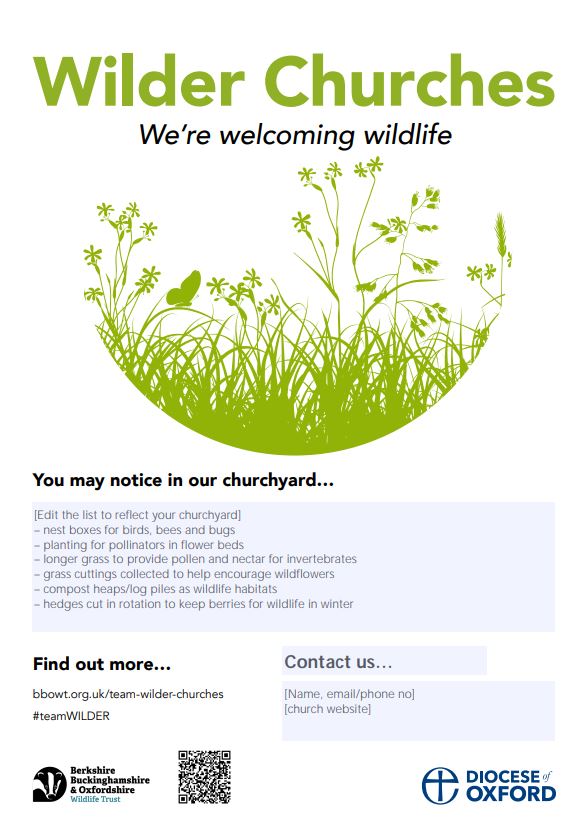
Churchyards provide vital green and quiet space, as well as vital homes for endangered species in some areas.
Churches are encouraged to explore simple ways to use their churchyard to create a haven for wildlife, for heritage, and for people.
In many urban areas, the churchyard is often the only ‘green lung’ for the community and the rural churchyard can often be a haven of biodiversity in intensively agricultural areas. They provide stepping stones through our urban and agricultural landscapes, contributing to wildlife corridors through areas that otherwise may be hard for some species to traverse. See the examples on the Flowery Burial Grounds map and this churchyard wildlife information.
Our Diocesan Advisory Committee provide a Caring for our Churchyards page with specific guidance on trees and monuments.
Why doesn't someone cut the grass?
 Many churchyards have an ancient, flower-rich grassland as they have escaped ploughing and the use of agricultural chemicals.
Many churchyards have an ancient, flower-rich grassland as they have escaped ploughing and the use of agricultural chemicals.
Flowering plants, or simply areas of long grass, support many other species such as invertebrates, reptiles, amphibians and small mammals. The church and boundary walls, gravestones and monuments may support many species of ferns, mosses and lichens. Pretty fungi might appear in spring or autumn.
If you choose to reduce the frequency of mowing in parts of your churchyard and implement rewilding, download this free poster to display in your churchyard.
View our Facebook Album of your churchyard #NoMowMay photos.
Wilder Churches
 Working with the Berkshire, Buckinghamshire and Oxfordshire Wildlife Trust (BBOWT) we have Wilder Churches to support and encourage efforts to provide opportunities for wildlife in churchyards. With almost 800 churchyards in the diocese, if each one provided some wildlife opportunities, it would create a valuable network for nature across the Thames Valley.
Working with the Berkshire, Buckinghamshire and Oxfordshire Wildlife Trust (BBOWT) we have Wilder Churches to support and encourage efforts to provide opportunities for wildlife in churchyards. With almost 800 churchyards in the diocese, if each one provided some wildlife opportunities, it would create a valuable network for nature across the Thames Valley.
If you’re already making space for wildlife, download and amend the editable “We’re Welcoming Wildlife” poster to highlight and explain your actions to visitors. Please also add a pin for your church to BBOWT’s 'Team Wilder' map so we can share the wildlife friendly churchyards across the diocese.
Download the poster
Churches Count on Nature and Love your Burial Ground week
Churches across the country celebrate Churches Count on Nature every year in June as part of the nationwide project run by Caring for God’s Acre (CfGA) and supported by the national Church of England Environment Programme. In 2026 it runs from 6-14 June 2026, details for registering will be available soon.
There are an estimated 12,000 Church of England churchyards throughout the country and around half of them already run biodiversity projects, while remaining respectful to their users, particularly family and friends of those buried there.
During this week churches are encouraged to run events to raise awareness and celebrate the treasures of their churchyard, and to submit wildlife discoveries as part of a central database which will list all the biodiversity churchyards are holding in store for the country.
Our Churchyard Nature Hunt is a handy activity for Churches Count on Nature events. Watch back past national chuch land and nature webinars for further ideas and advice.
Churchyard Action Pack
This resource has a wealth of information to help with the sensitive management of your churchyard. There are guidelines on the management of wildlife habitats such as grassland and trees, and features such as lychgates, boundary walls and old stonework. It also includes information on how to involve others and how to make use of these places for learning and community activity. It is available to buy or download from Caring for God’s Acre. Their FAQs are also very helpful.
Swifts
Swifts are beautiful creatures which have declined massively in recent years. Church buildings can provide much needed nesting sites. If you know where swifts nest or feed regularly, please record them on Swift Mapper. You can view the Oxford Natural History Museum's swift nest box webcam from around May to August.
Caring for God’s Acre have information on installing swift boxes on churches. The introduction of bird boxes falls under List B (List B1.19) which can be applied for on the online faculty system. Swift Conservation, Cherwell Swifts Conservation Project, Oxford Swift City, or BBOWT's Nextdoor Nature project may be able to offer advice.
Bats
Bats are a group of species which have also declined over time, due to human activities destroying roosts and food sources. They often use church buildings as the conditions and old timbers provide suitable roosting sites. Small numbers may not be noticed, but sometimes their droppings and urine can cause problems. The Bat Conservation Trust offer a free advice service for places of worship. As bats and their roosts are protected, we also need to consider them when planning any works to buildings, including timber treatment and several net zero carbon actions. The Church of England shares information and advice on works that may affect bats and when surveys are needed.